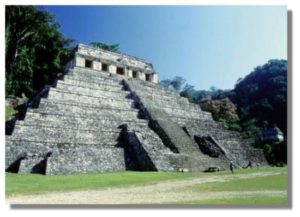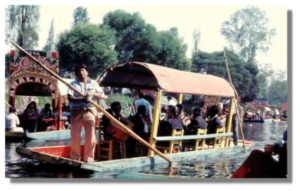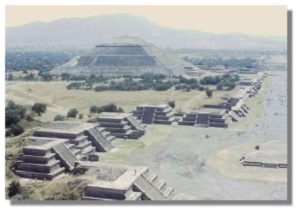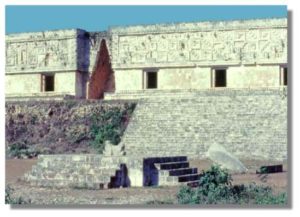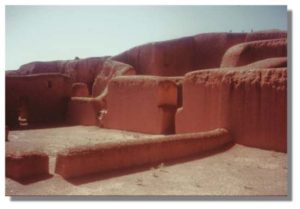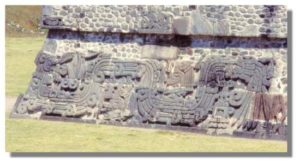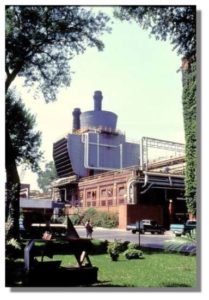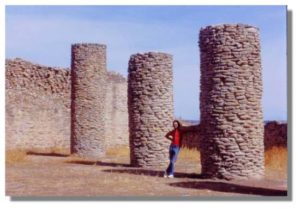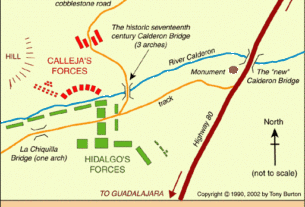Did You Know…?
The status of World Heritage site is a UNESCO (United Nations Educational, Scientific and Cultural Organization) denomination. The status is conferred on selected sites under the terms of “The Convention Concerning the Protection of the World Cultural and Natural Heritage”, adopted at UNESCO’s 17th General Conference in November 1972 and subsequently ratified by 186 member states.
Nations were invited to submit their proposals for any cultural or natural sites that they considered “of outstanding universal value”, and therefore eligible for inclusion on the World Heritage list. All proposals have to be approved by a special UNESCO World Heritage Committee.
The attraction of having a site classified as a World Heritage site is that it affords extra possibilities for obtaining technical co-operation in matters relating to conservation, for international assistance for research, training and equipment, and for emergency assistance in the event of damage due to specific natural or man-made disasters.
The list was first published in 1978, at which time it mainly featured European sites. Since then, regular additions have been made. As of May 2009, the list now includes 878 locations in 145 member states. Of these sites, 679 are considered to have cultural significance, 174 to have natural importance and there are also 25 which share both cultural and natural value.
Mexico has 29 sites on the list, considerably more than any other country in the Americas. For example, the U.S. has 19 (together with a share of a 20th that straddles the border with Canada), Brazil 16 (as well as one jointly held with Argentina), Canada 14 (plus the joint U.S.-Canada site) and Peru 11.
Worldwide, only five countries have more World Heritage sites than Mexico. Four of these countries are in Europe: Italy (44), Spain (41), Germany (33) and France (33). The other country is China (38).
Mexico’s existing World Heritage sites
Date added to list Name of site (state in brackets)
1987 Sian Ka’an biosphere reserve (Quintana Roo)
1987 Pre-Hispanic city and national Park of Palenque (Chiapas)
1987 Historic Center of Mexico City and Xochimilco (Mexico D.F.)
1987 Pre-Hispanic city of Teotihuacan (State of Mexico)
1987 Historic Centre of Oaxaca and archaeological site of Monte Alban(Oaxaca)
1987 Historic Centre of Puebla (Puebla)
1988 Historic town of Guanajuato and Adjacent Mines (Guanajuato)
1988 Pre-Hispanic city of Chichen-Itza (Yucatán)
1991 Historic Centre of Morelia (Michoacán)
1992 Pre-Hispanic city of El Tajin (Veracruz)
1993 Whale Sanctuary of El Vizcaino (Baja California)
1993 Historic Centre of Zacatecas (Zacatecas)
1993 Rock Paintings of the Sierra de San Francisco (Baja California)
1994 Earliest 16th-Century monasteries on the slopes of Popocatepetl (Morelos)
1996 Prehispanic town of Uxmal (Yucatán)
1996 Historic Monuments, Zone of Querétaro (Querétaro)
1997 Hospicio Cabañas, Guadalajara (Jalisco)
1998 Historic Monuments, Zone of Tlacotalpan (Veracruz)
1998 Archeological Zone of Paquimé, Casas Grandes (Chihuahua)
1999 Historic fortified town of Campeche (Campeche)
1999 Archaeological Monuments, Zone of Xochicalco (Morelos)
2002 Ancient Maya City and biosphere reserve of Calakmul (Campeche)
2003 Franciscan Missions in the Sierra Gorda (Querétaro)
2004 The Casa Museo Luis Barragán (the twentieth century home of the famous architect in Mexico City)
2005 Islands and protected areas of the Gulf of California
2006 Agave landscape and old tequila-making facilities in Amatitlán, Arenal and Tequila (Jalisco)
2007 Central University City Campus of the Universidad Nacional Autónoma de México (UNAM) (Mexico City)
2008 Monarch Butterfly Biosphere Reserve (Michoacán and State of México)
2008 San Miguel de Allende and the Sanctuary of Jesús de Nazareno de Atotonilco (Guanajuato)
Mexico’s proposed World Heritage sites:
Mexico has formally proposed numerous additional sites for World Heritage Status. The applications are coordinated by the National Anthropology and History Institute (Instituto Nacional de Antropología e Historia), better known by its Spanish acronym INAH.
1. Prehistoric caves of Yagul and Mitla (Oaxaca)
2. Historic town of San Sebastián del Oeste (Jalisco)
3. Tule (ahuehuete) tree of Santa María del Tule (Oaxaca)
4. Zempoala aqueduct, a project of Padre Tembleque (Hidalgo and State of Mexico)
5. The Camino Real de Tierra Adentro, the 2,900 kilometer historic route linking Mexico City to Santa Fe in New Mexico
6. Monterrey’s old industrial facilities, including a foundry, brewery and glassworks (Nuevo León)
7. The Aguascalientes railroad station and residential complex (Aguascalientes)
8. The Museo Casa Estudio Diego Rivera and Frida Kahlo (Mexico D.F.)
9. Ludwig Mies van Der Rohe and Félix Candela’s industrial buildings, including the offices of Bacardí y Compañía (State of Mexico)
10. Historic city of San Luis Potosí (San Luis Potosí)
11. Chapultepec Woods, Hill and Castle (Mexico D.F.)
12. Historic town of Alamos (Sonora)
13. Pre-Hispanic city of Cantona (Puebla)
14. The church of Santa Prisca in Taxco (Guerrero)
15. The former Jesuit college in Tepotzotlán (State of Mexico)
16. The churches of the Zoque province (Chiapas)
17. The pre-Hispanic city of Chicomostoc-La Quemada (Zacatecas)
18. Archaeological monuments, zone of Mitla (Oaxaca)
19. Cuatrociénegas flora and fauna reserve (Coahuila)
20. Franciscan convent and Our Lady of the Assumption cathedral in Tlaxcala (Tlaxcala)
21. Historical town of the Royal Mines of Cosala (formerly known as the Royal of the Eleven Thousand Virgins of Cosala) (Sinaloa)
22. Huichol Route used by Huichol Indians through their sacred sites to Huiricuta (San Luis Potosí) (sometimes spelt as Wirikuta)
23. The former textile factory La Constancia Mexicana and its housing area (Puebla)
24. The Lacan-Tún—Usumacinta region (Chiapas)
25. The Banco Chinchorro Biosphere Reserve(offshore in Quintana Roo)
26. The El Pinacate and the Great Altar Desert Biosphere Reserve (Sonora)
27. The Selva El Ocote Biosphere Reserve (Chiapas)
28. Sotáno del Barro, a 450-meter-deep sinkhole (Querétaro)
29. Tecoaque archaeological site (Tlaxcala)
30. Valle des Cierges, including Montevideo Canyon (Baja California)
Not all sites are accepted. For instance, Mexico’s rejections include the Lake Pátzcuaro region, in the state of Michoacán, and the El Triunfo nature reserve.
Mexicans are justly proud of their nation’s history and culture, and have always been prepared to share them with visitors. By getting so many locations on UNESCO’s list of World Heritage sites, the country is reaffirming its commitment to trying to ensure that its cultural and natural treasures are well protected for future generations. Any of the places mentioned in this article is well worth visiting and exploring. In some cases, it is possible to construct fascinating “itineraries” combining several of the sites in a single trip.
Bear in mind, though, that there are also numerous attractions not yet listed as World Heritage sites that probably deserve to be included in the future. For starters, how about Paricutin Volcano, one of only a handful of new volcanoes to appear on land in historic times? Or how about the Copper Canyon region, with its grandiose scenery and indigenous Tarahumar population?
For more information:
- UNESCO’s World Heritage web-pages are at https://whc.unesco.org/pg.cfm
- For an academic discussion of World Heritage sites in Mexico, see the article by Bart van der Aa, Peter Groote and Paulus Huigen

